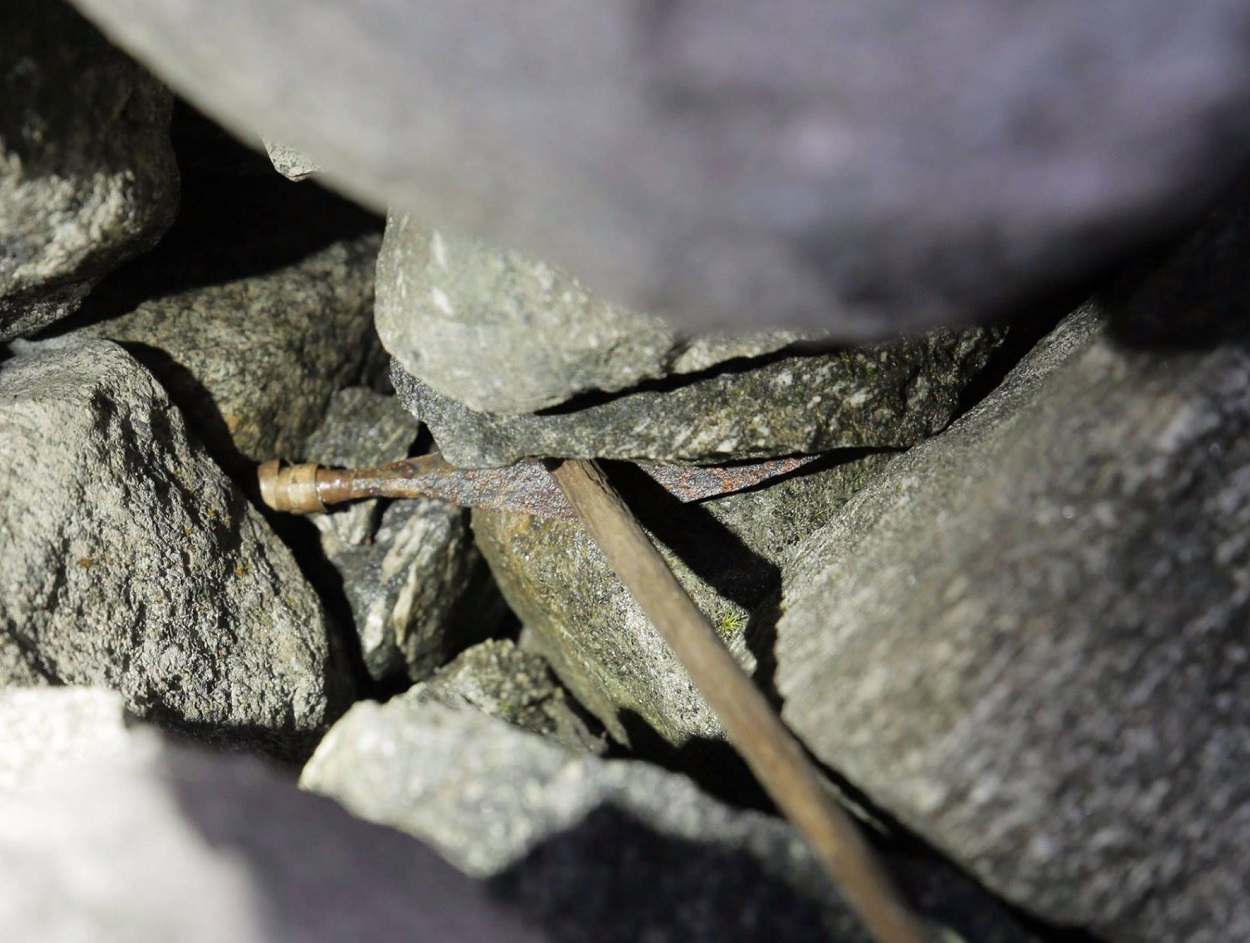Archaeologists from the “Secrets of the Ice” project have discovered a Viking Era arrowhead during a survey of an ice site in the Jotunheimen Mountains.
“Secrets of the Ice” is a glacier archaeology program that has been studying glacial ice patches containing preserved artefacts and objects.
By looking at aerial photographs, satellite imagery, and digital terrain models of mountains and ice fields, the researchers have been identifying possible sites of archaeological interest to conduct a physical ground inspection.
This research is supported by glacial archaeologists who use computer modelling to determine ancient trails in the Innlandet region.
The arrowhead was found during one of these preliminary surveys of an ice site in the Jotunheimen Mountains, in preparation for the next season of ground inspections.
According to a post by “Secrets of the Ice” on social media: “We were out surveying an ice site in the Jotunheimen Mountains, when we spotted the end of an arrow shaft peeking out of the rocks.”
Upon further investigation, this revealed a Viking Era arrowhead among an accumulation of rubble and ice, which appears complete with the birch bark still wrapped around the socket.
In previous years, the project has discovered objects related to hunting, including a cache of 1500 years old scaring sticks, a perfectly preserved flag made from radially split pine, and arrows, bows, and a spear.
The team have also previously found objects of a domestic nature, providing new insights into the people that traversed these dangerous mountain passes. These include items related to transport and clothing, such as a wooden whisk, a woven Viking mitten, a 3400-year-old hide shoe, and complete tunics from the Iron Age.
Header Image Credit : Secrets of the Ice
Sources : Secrets of the Ice







